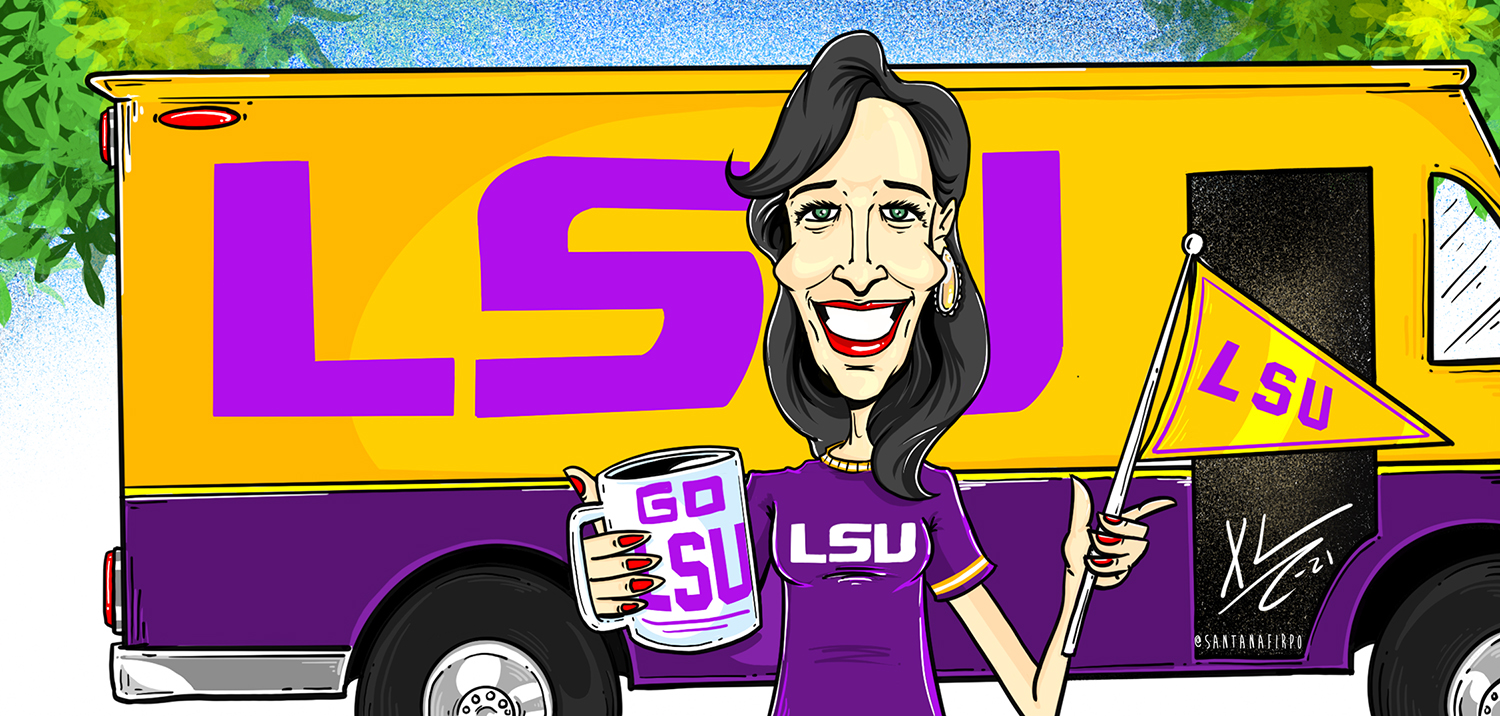Long Story Short: Tailgating Tales
It started in a meager, slapped-together, sloppy way—with much dedication in the midst of despair—as all great endeavors typically begin. It started small, and it seemed futile. Impossible, at first. Just an overlooked location outside of a has-been stadium with a ne’er-do-well team, a disastrous coach and a lackluster fan base.
That’s right. I’m talking about LSU tailgating. And if you wanted to get prime real estate, you should have staked out your spot during the Curley Hallman years—in the midst of six straight seasons of losing. There was tailgating room to spare. It was the early 1990s—very few souls in sight to walk through your tent, snatch up your snacks and help themselves to your ice chest full of longnecks.
Course, back then, we didn’t have a tent. Not even an ice chest. If I remember well, our tailgating scene was nothing more than a pickup truck and a card table stacked with plastic cups next to a keg of Milwaukee’s Best (The Beast). We didn’t even have to rent the parking spot. But we were right where we wanted to be: under the big oak tree, right up the hill on North Stadium Drive from Tiger Stadium, next to the Indian Mounds.
Biding our time.
After Hallman’s tenure ended, Gerry DiNardo entered the scene and tailgating picked up along with it. We rented the parking space, and a few of our crew had to go out early Saturday mornings to pitch the tent and stake the claim. Spots, back then, were up for the grabbing, and we wanted to make sure that no one grabbed ours. But still, the winning was hit or miss and the tailgating was amateurish, at best.
Then we got the bread truck.
The tailgating crew—Roger Cutrer at the helm—purchased the 1972 Holsum Bread truck in 2002, had it professionally painted in purple and gold, and parked it right next to the sidewalk and street where all the players get out of their buses and where the band turns the corner to go down to the field. Right at our tailgating spot. Nick Saban was coaching then, and a few good wins and some hope didn’t hurt.
Now, I’m not here to talk football or coaching, and I’m certainly not here to remember exact dates of key plays and the games that brought the goalposts down, though I was there. I’m here to talk tailgating and the evolution of the last 30 years. Kegs of beer turned to bottles of brew; homemade snacks became catered affairs, and the dirt beneath the oak tree is now covered in turf. Multiple oversized TVs swing from the back of the bread truck, playing various football games going on simultaneously. Music pours through the speakers. And the crowds going by on the sidewalk are so heavy that a makeshift fence often separates them from us.
It was worth the wait.
These days, those new to the scene want to go straight to the top. They come in, loving LSU, and they want to buy their way into LSU tailgating, as if tailgating had a price. Sure, you can purchase a ticket to a company tent or a sponsored event. But to have the true tailgating experience, you have to go to an authentic LSU tailgate, where jambalaya is coming out of a large pot, music is blaring, and friends—who haven’t seen each other since last season—are catching up once again.
It’s an evolution. And like anything worth the wait, you’ve got to pay your dues. You’ve got to suffer through some stinky seasons. You’ve got to find hope when all is lost. Otherwise, there’s no way you can be an LSU Tiger.
Bide your time.












